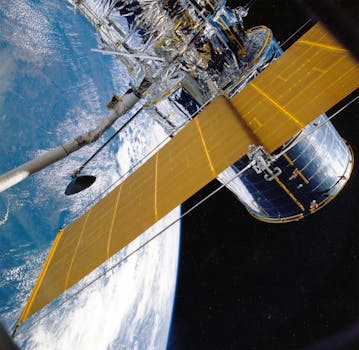Beyond Earth: How Recent Advances Are Shaping Satellite Telecommunications

Beyond Earth: How Recent Advances Are Shaping Satellite Telecommunications
Satellite Telecommunications
Recent advances in satellite telecommunications are revolutionizing the way we communicate beyond Earth. With new technologies and innovations, satellite communications are becoming faster, more reliable, and more accessible than ever before. Satellite telecommunications refer to the use of satellites to transmit and receive data, voice, and video signals over long distances. This technology has been around for decades, but recent advances have made it more efficient, cost-effective, and widely available.
One of the key drivers of recent advances in satellite telecommunications is the development of new satellite constellations. These constellations consist of hundreds or even thousands of small satellites that work together to provide global coverage and high-speed connectivity. Companies such as SpaceX, OneWeb, and Amazon are leading the charge in this area, with plans to launch thousands of satellites in the coming years.
Another area of advancement is the use of advanced materials and technologies, such as quantum computing and artificial intelligence, to improve the performance and efficiency of satellite communications. For example, quantum computing can be used to enhance the security and encryption of satellite communications, while artificial intelligence can be used to optimize traffic routing and network management.
Applications of Satellite Telecommunications
The applications of satellite telecommunications are diverse and widespread. One of the most significant uses is in the provision of broadband internet access to remote and underserved communities. Satellite communications can provide high-speed internet access to areas where traditional fiber-optic or wireless networks are not available. This has the potential to bridge the digital divide and provide equal access to information and opportunities for people around the world.
Satellite telecommunications are also used in a variety of other applications, including navigation, weather forecasting, and remote sensing. For example, GPS (Global Positioning System) relies on a network of satellites to provide location information and navigation data to users around the world. Weather forecasting also relies on satellite data to predict weather patterns and track storms.
Challenges and Limitations
Despite the many advances and applications of satellite telecommunications, there are still several challenges and limitations to be addressed. One of the main challenges is the issue of latency, which refers to the delay between the time data is sent and the time it is received. This can be a problem for applications that require real-time communication, such as video conferencing or online gaming.
Another challenge is the issue of interference, which can be caused by other satellites, radio frequency interference, or other sources of noise. This can degrade the quality of the signal and reduce the overall performance of the satellite communication system.
Conclusion
In conclusion, recent advances in satellite telecommunications are shaping the future of communication beyond Earth. With new technologies and innovations, satellite communications are becoming faster, more reliable, and more accessible than ever before. While there are still challenges and limitations to be addressed, the potential benefits of satellite telecommunications are vast and far-reaching. As the technology continues to evolve and improve, we can expect to see even more innovative applications and uses of satellite telecommunications in the years to come.





